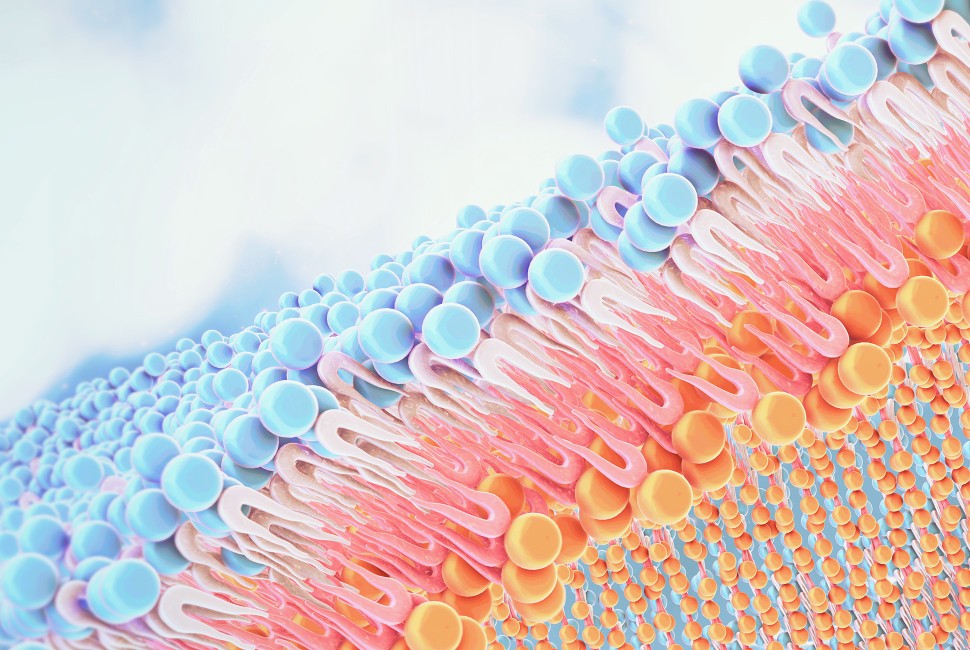Proteins found imbedded within the outer membranes of every living cell serve as biochemical “bouncers,” throwing their doors open or slamming them shut as needed.
Rather than passively letting molecules pass in and out of the cell, the protein gatekeepers open wider for life-sustaining materials like potassium and sodium, which pass through ion channels in the membrane when the cell needs, but then shut off the flow to prevent chemical concentrations from getting too high. Understanding ion transport has been a long-standing goal of scientists across fields.
“Naturally, our team was interested in seeing whether we could build artificial systems that would, in some way or another, mimic those biological properties,” said Northwestern University chemist George Schatz.
The ability to tune membranes to let more of a material in sometimes and keep them out at other times could revolutionize how scientists make water safe to drink and remove harmful — or valuable — chemicals from oceans, lakes and rivers.
“It will advance technology greatly if we can understand ion transport in biological systems and creatively manipulate it in artificial ones,” said Chong Liu, University of Chicago Pritzker School of Molecular Engineering assistant professor.
The cross-institutional team of Northwestern and UChicago scientists are behind a new paper in Nature Communications revealing new insights into how ion transport works.
Liu and Schatz connected through the Argonne-led Advanced Materials for Energy-Water Systems (AMEWS) Center, which also funded the research. The mechanism behind ion transport was not clear until co-first author Qinsi Xiong, a research associate in Schatz’s theoretical group, built an entirely new model from the ground up, in Schatz’s words, “from scratch.”
By adding different amounts of lead, cobalt or barium ions, the team found it could vastly increase or limit the amount of potassium passing through an artificial membrane, mimicking cells’ abilities to mind their own biological membranes. Among the team’s more remarkable findings was that just a 1% increase in the presence of lead ions doubled the amount of potassium coming through the channels.
“The most exciting part of our research is that we show how dramatically ion transport in angstrom-scale 2D channels can be changed in the presence of other ions, even a tiny fraction,” said co-first author Mingzhan Wang, a postdoctoral researcher in the Liu group at UChicago.
In addition to future applications in water purification and material extraction, the research represents an advance in pure science, helping physicists and biologists understand better why ions and cells behave the way they do.
Welcoming ions in
Ions enter cells through ion transport channels, nanoscale tunnels running through cell membranes. Devices engage plastic filters and other membranes. Because the word “ion” indicates a positive or negative charge, any charge within the wall of the channel will push or pull on its travelers. Positively charged potassium moves slowly through negatively charged tunnels as negatively charged chloride ions zip past.
Xiong’s model incorporated ion interactions that would simulate transport through nanochannels. When lead ions are added, they bind to acetate groups on the channel walls. Their positive charge attracts the negatively charged chloride ions, slowing the chlorides down to roughly match the speed of potassium ions.
Once the chlorides and potassium ions are moving through the tunnel at the same rate, they form potassium chloride pairs, which are neutral, so flow is unimpeded through the channel, increasing the amount of potassium coming through the membrane.
“Without a charge to interact with surroundings, the new molecule can flow more quickly through than would occur if the two ions were separately flowing through the channel,” Schatz said.
Stopping the flow
In addition to this cooperative effect, the team also discovered an inhibitory effect that limited rather than enhanced potassium flowing through the channels. By adding a small amount of cobalt or barium ions capable of competing with lead for spots to bind to acetate groups, the researchers limited lead’s effects on other ions and, at the same time, diminished the formation of neutral ion pairs that enhanced transport.
“By changing the combination of ion species, we were able to switch from a cooperative effect to an inhibitory effect,” Xiong said. “Understanding the underlying physics is essential.”
The next steps for the research include seeing what materials other than lead have an effect, and if the effect can be expanded to control the flow of elements other than potassium. Lithium, valued for its use in batteries but currently harvested from water through environmentally damaging methods, could be another future target.
“Multivalent-ions effect study remains largely hidden for the rising field of nanofluidics,” Wang said. “Certainly, our protocols can be extended to other nanofluidic systems, and more can be expected in the future.”
This work is supported by Advanced Materials for Energy-Water-Systems Center, an Energy Frontier Research Center funded by the U.S. Department of Energy.


